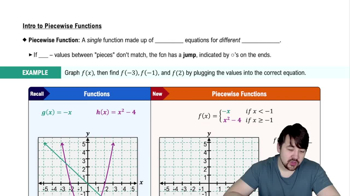Graphing Simple Rational Functions
Graph the rational functions in Exercises 63–68. Include the graphs and equations of the asymptotes and dominant terms.
y = 1/(x − 1)
 Verified step by step guidance
Verified step by step guidance Verified video answer for a similar problem:
Verified video answer for a similar problem:



 6:47m
6:47mMaster Finding Limits Numerically and Graphically with a bite sized video explanation from Patrick
Start learning